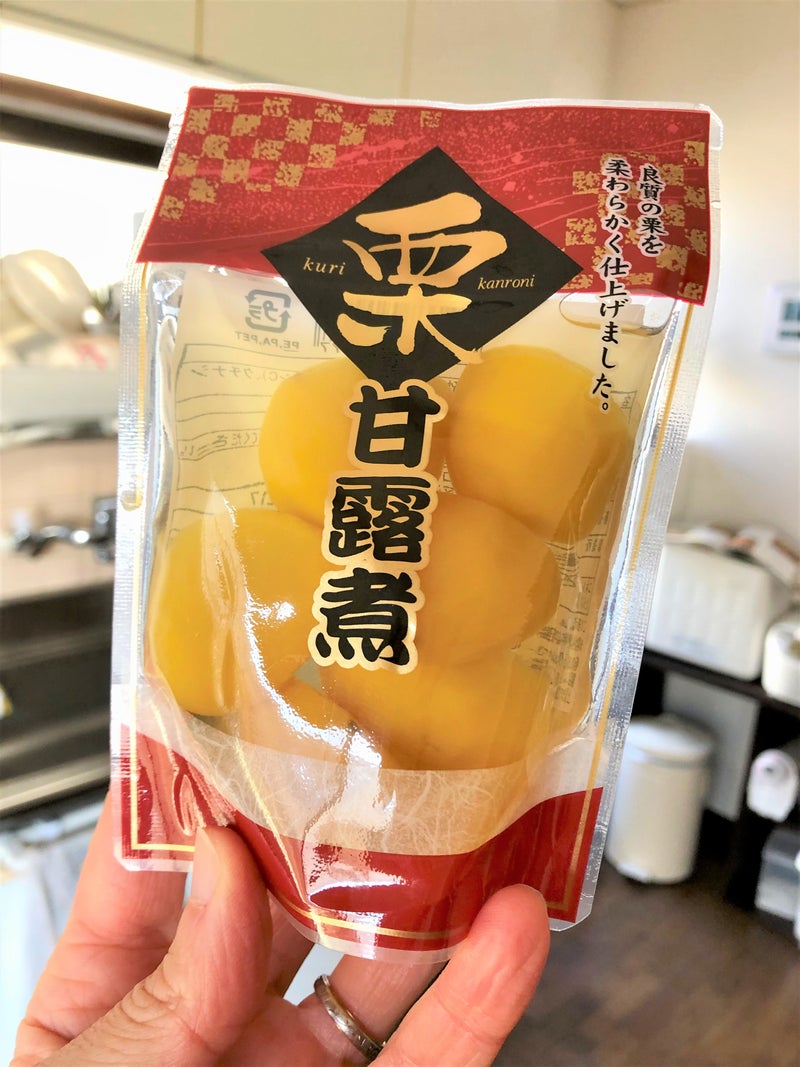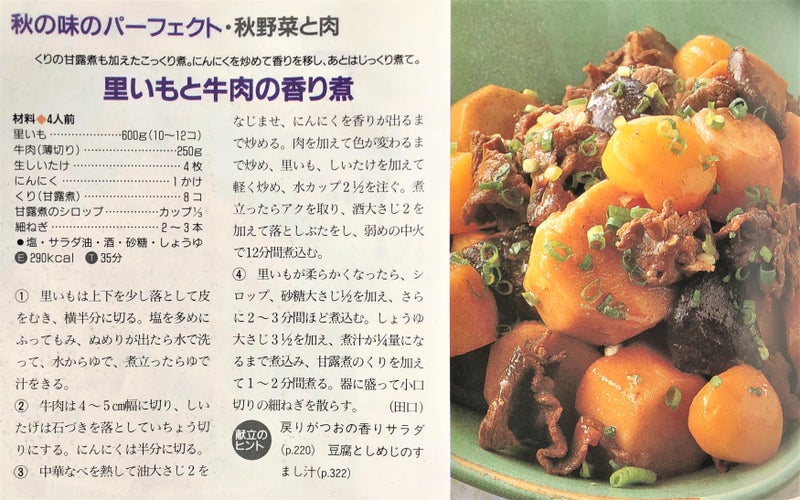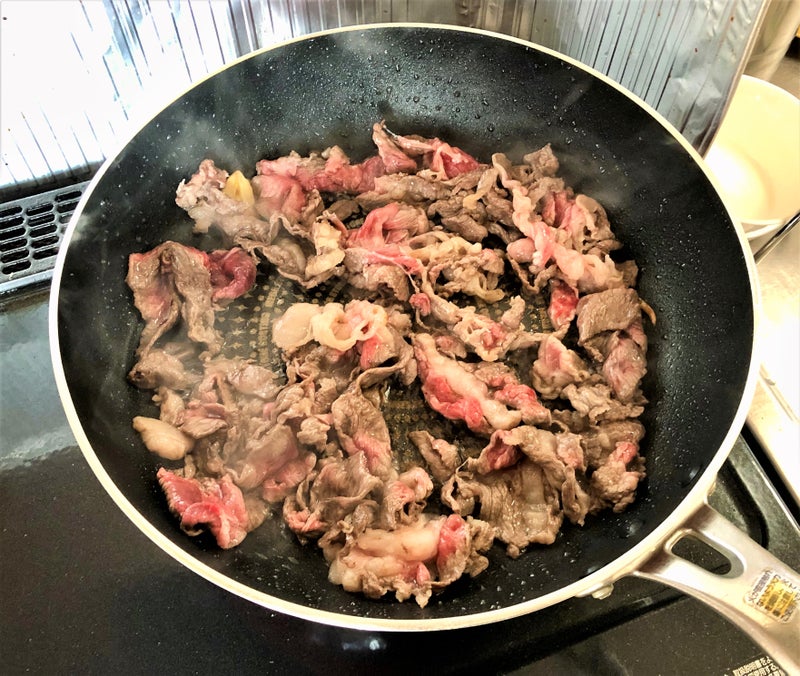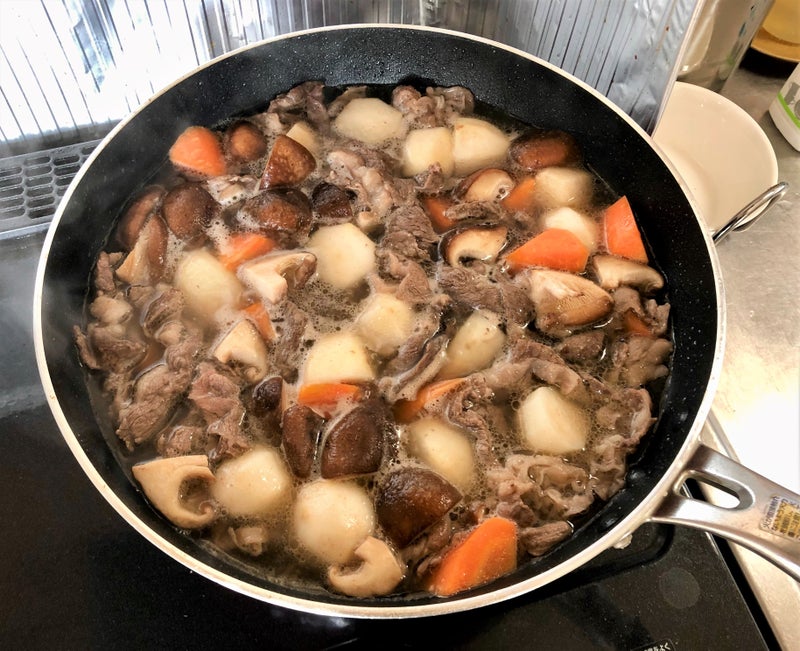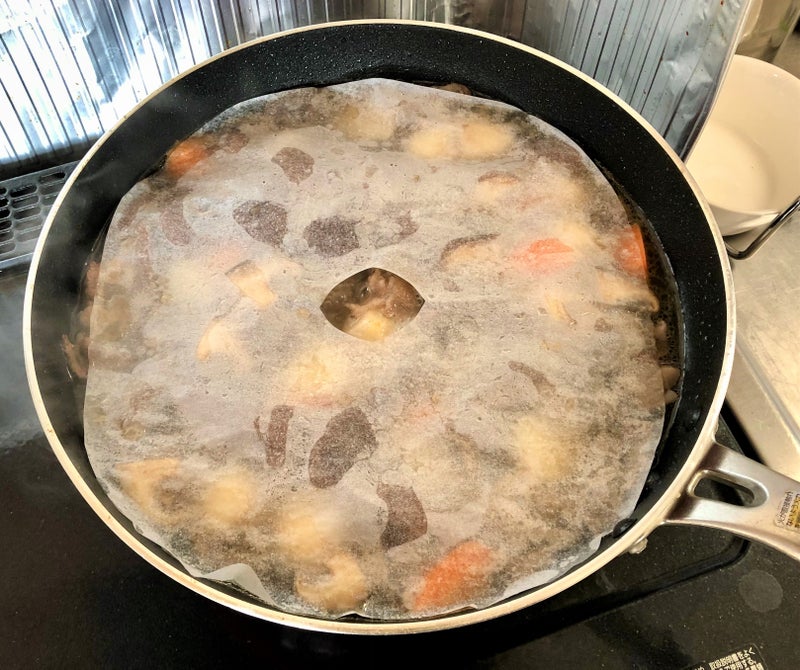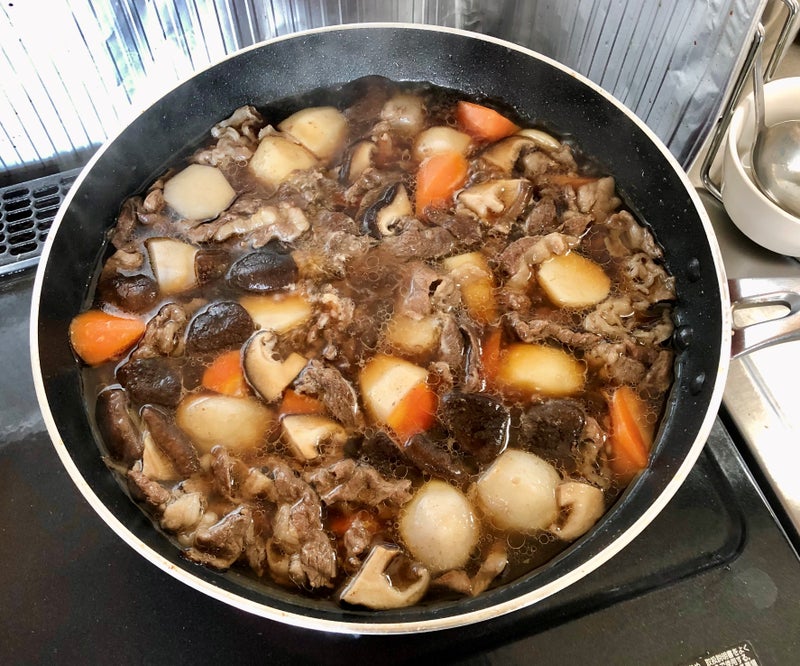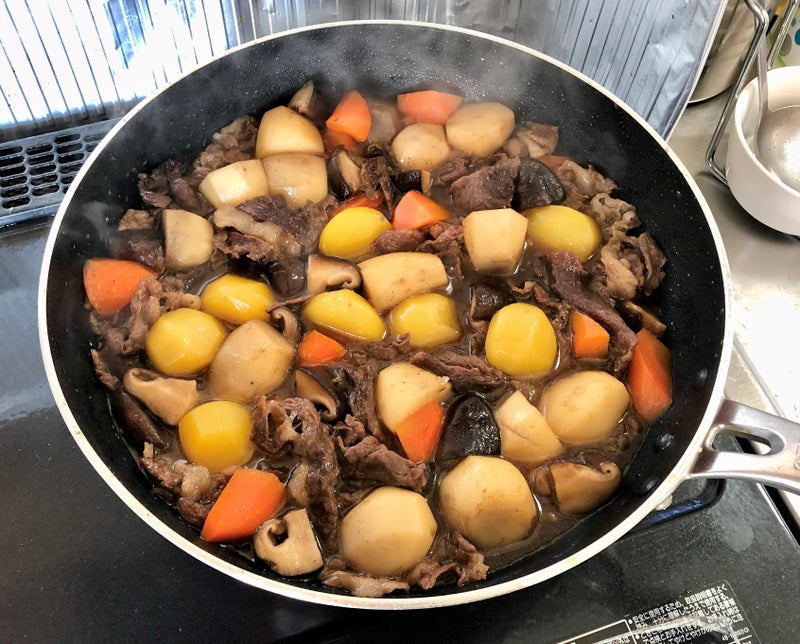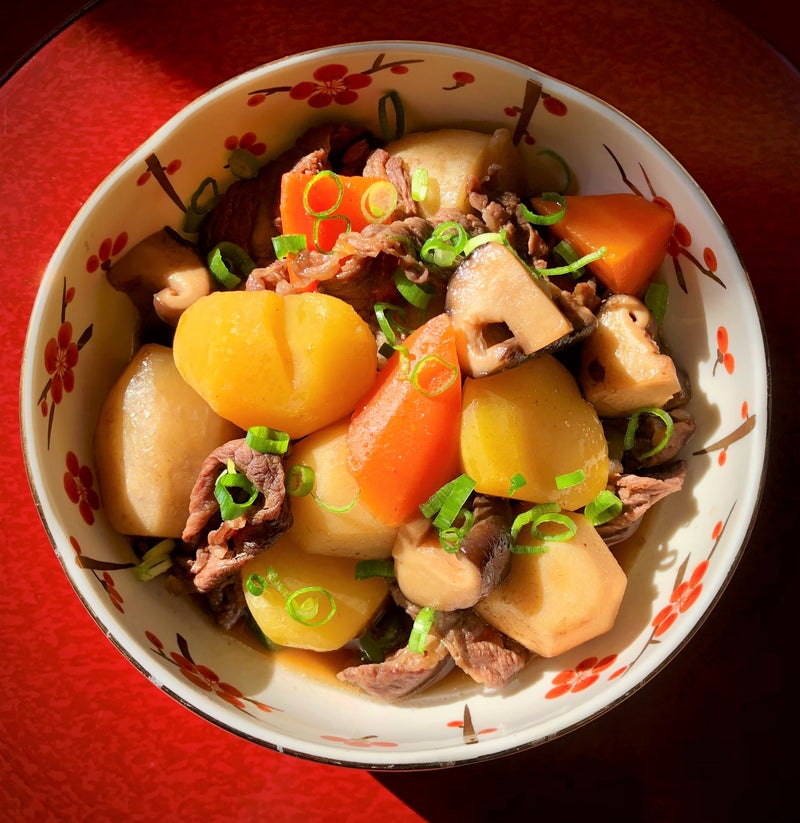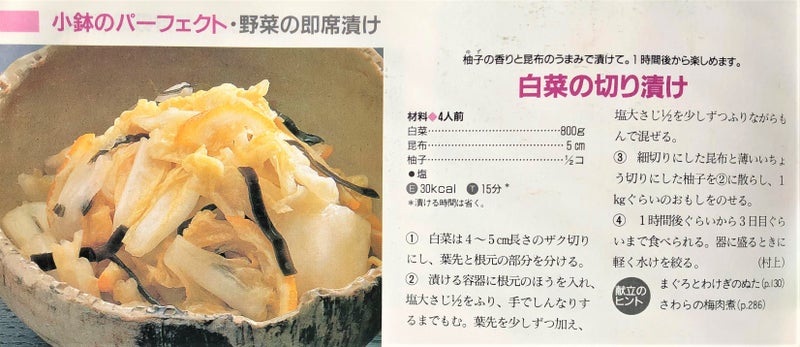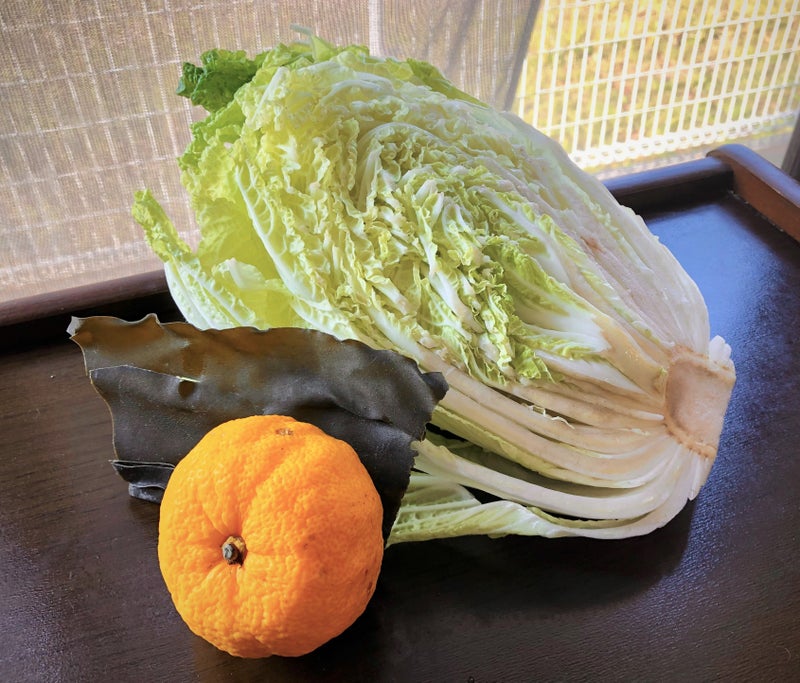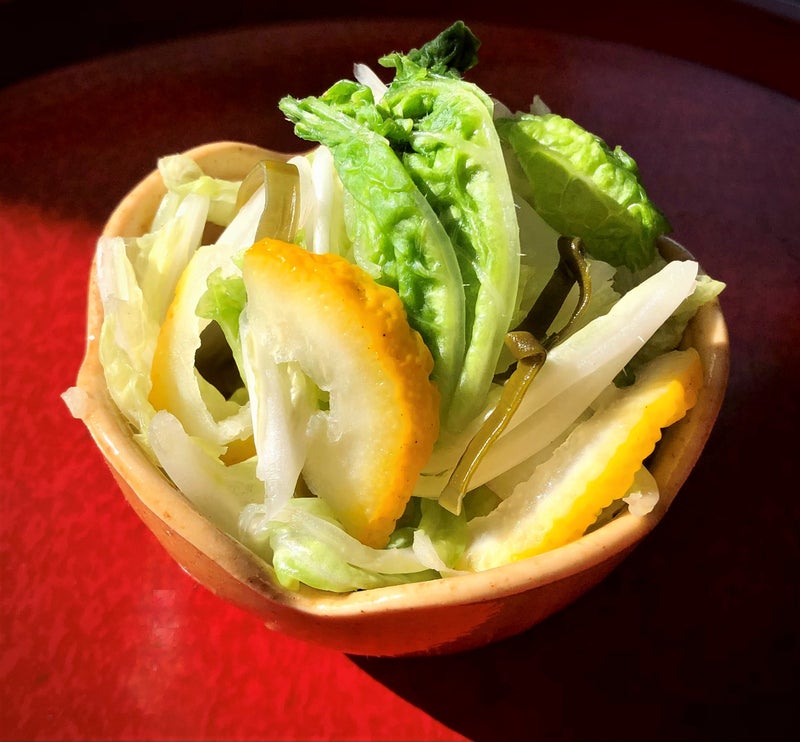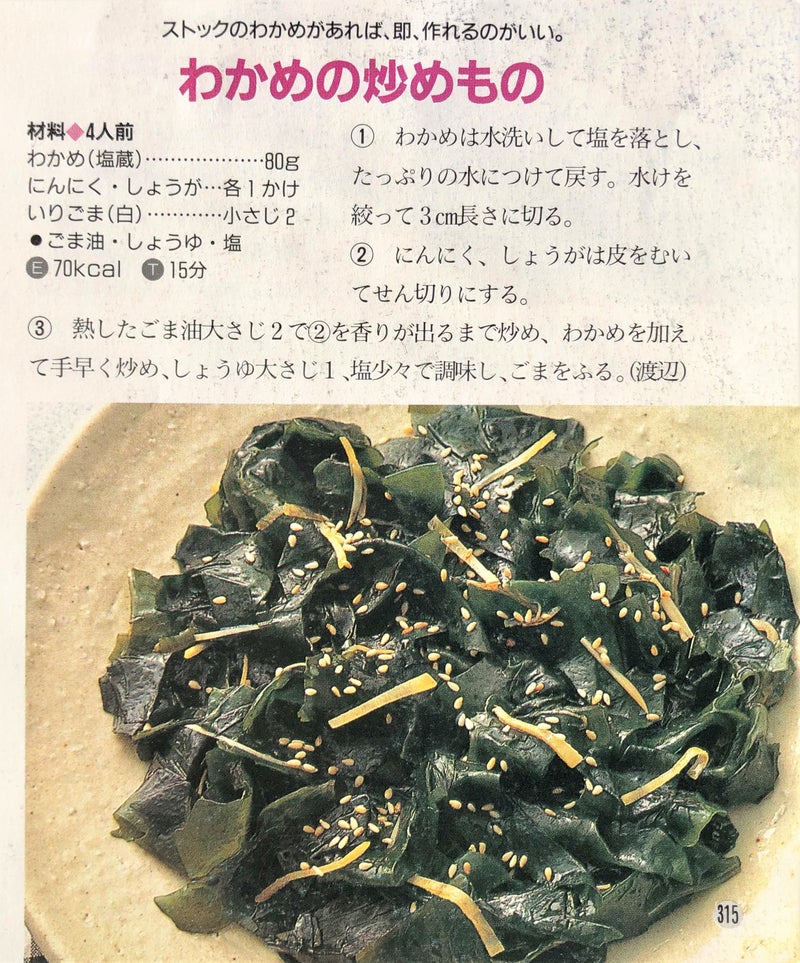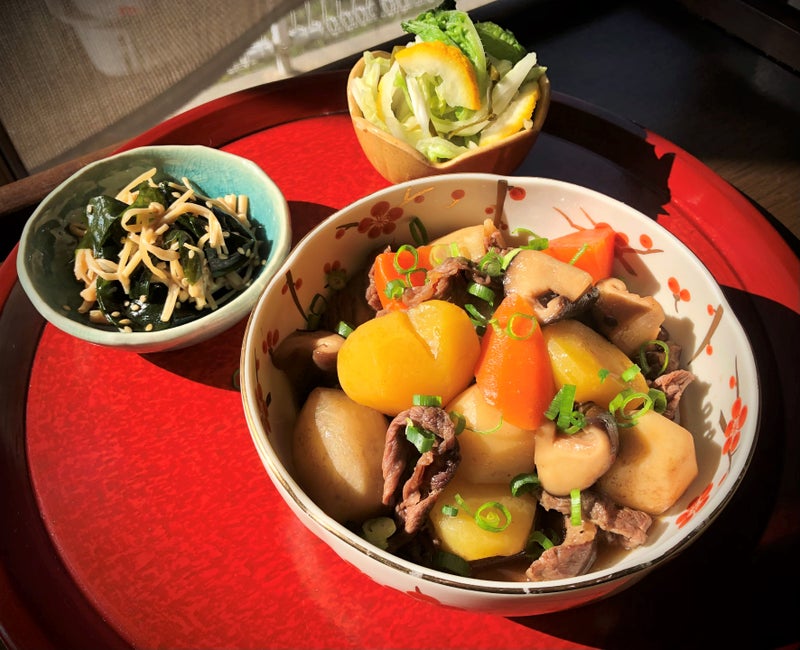Last week, I wrote that I want to get my fill of fall ingredients while I still can, because once fall is over, I will have to wait a whole year before I can eat them again. If I had to choose one fall ingredient that I would like to enjoy one last time, it would be chestnuts!
先週のブログで、「秋が終わらないうちに秋の食材を心ゆくまで食べないと、また食べられるまでに一年間待つしかない」と書きましたね。もし、もう一回食べたい秋の食材を一つだけ選べなければならないなら、栗を選ぶと思います!
Unfortunately, fresh chestnuts have already disappeared from the stores! However, I was able to find these candied chestnuts, which are an important ingredient in a special New Year's recipe called kuri kinton (mashed sweet potato mixed with candied chestnuts).
残念ながら、生栗はもうスーパーから消えてしまいました!しかし、お正月の「栗きんとん」に欠かせない材料の一つ、「栗甘露煮」を見つけました。
Since we still have more than a month to go before New Year's holidays, it's a little too early to make kuri kinton, but when I found this interesting recipe in my first Japanese cookbook, I knew just what I would do with my candied chetnuts!
お正月までは後一ヶ月なので、栗きんとんを作るのがまだ早いですが、最初に買った和食レシピ本の中でこの面白いレシピを見つけたら、「栗甘露煮を使ってこれを作りたい!」と思いました。
This is a variation on nikujaga (meat simmered with potatoes), which uses taro root instead of potatoes, and adds candied chestnuts to sweeten the simmering liquid. The recipe also calls for fresh shiitake mushrooms, and since I didn't have quite enough taro root, I threw in some carrots as well.
このレシピは肉じゃがのバリエーションで、ジャガイモの代わりに里芋を使って、栗甘露煮を入れることで煮汁が甘くなります。レシピでは生しいたけも書いてあり、里芋の量が足りなくて、追加で人参も入れてみました。
After peeling and parboiling the taro root to get rid of some of the sliminess, I cut one clove of garlic in half and fried it in 2 tablespoons of oil until fragrant, then added 250 grams of thin-sliced beef.
里芋の皮を剥いて、ぬめりをとるために下茹でをしました。その後、ニンニクの1かけを半分に切って、油大さじ2で香りが出るまで炒めてから、薄切りの牛肉250gを加えました。
Once the meat was cooked through, I added the taro root, carrots and shiitake mushrooms, and continued frying for a bit before adding 500 milliliters of water.
肉に火が通ったら、里芋、人参としいたけを入れて炒め合わせてから、水500mlを注ぎました。
Once it came to a boil, I skimmed off the scum, and added 2 tablespoons of sake, put on a drop lid, and simmered it on medium low for 12 minutes.
煮立ったら、あくをとって、酒大さじ2を入れて、落し蓋をして弱い中火で12分煮ました。
The I added 1 and a half tablespoons of both sugar and candied chestnut syrup, and continued simmering for another 2 minutes. Next I added 3 and a half tablespoons of soy sauce, and simmered until the liquid had reduced to about one quarter.
それから、砂糖と栗甘露煮のシロップ各大さじ11/2を入れて2分ほど煮続けました。次は醤油大さじ31/2を加えて、煮汁の量が1/4になるまで煮込みました。
Finally, I added the candied chestnuts, and continued simmering for another 4 minutes, spooning the simmering liquid over the meat and vegetables.
最後に、栗甘露煮も入れて、スプーンで煮汁を肉と野菜にかけながら、さらに4分煮ました。
After arranging the meat and vegetables in a bowl, I spooned over a little of the simmering liquid, and sprinkled on some thin-sliced green onions. (I love the Christmas colors!)
お皿に肉と野菜を盛り、煮汁を少しかけました。最後に小口に切った細ネギを散らしました。(クリスマスっぽい色が大好きです!)
For a side dish, I still had some Chinese cabbage and yuzu left in the fridge, so I decided to make this simple dish of vegetables pickled in salt.
おかずとして、冷蔵庫の中に白菜と柚子がまだ残っていたので、このシンプルな野菜の塩漬けを作ることにしました。
I only had about 400 grams of Chinese cabbage left, so I reduced all the ingredients by half. Besides Chinese cabbage and yuzu, all I needed was dried konbu seaweed and salt!
残りの白菜は400gしかなかったので、レシピの分量を半分にしました。白菜と柚子の他に必要なのは、昆布と塩だけでした!
I cut up the Chinese cabbage, tossed it with half a tablespoon of salt, then added thin strips of konbu seaweed and thinly sliced yuzu on top. The recipe says to put a 1 kilogram weight on top to press the cabbage down, but since I don't have a weight, I used a plate and a big bowl filled with water to weigh it down instead.
白菜を切って、塩大さじ1/2で揉んで、細く切った昆布と柚子を上にのせました。レシピでは1㎏の重石をのせると書いてありますが、私にはちゃんとした重石はないので、その代わりにお皿と水がいっぱい入っていた大きなボールをのせました。
In hindsight, I would have cut the Chinese cabbage into smaller pieces, and used a little more salt, but all in all, it was pretty good - light and crunchy with the fresh flavor of yuzu!
後知恵で考えると、白菜をもう少し小さく切って、塩をもう少し加えればよかったですが、シャキシャキの白菜がいいし、柚子の爽やかな香りもいいし、まあまあ美味しかったです!
For another side dish, I had some fresh (not dried) wakame seaweed in the fridge, so I chose this wakame stir fry recipe.
もう一品のおかずとして、生のわかめが冷蔵庫に入っていたので、この「わかめの炒めもの」というレシピを選びました。
I didn't have enough wakame to make this dish exactly as the recipe is written, so I added some enoki mushrooms for volume. After thinly slicing a clove of garlic and 10 grams of ginger, I fried them in 1 tablespoon of sesame oil until fragrant. Then I added the wakame and enoki mushrooms and continued frying until the mushrooms became tender. Finally I added one tablespoon of seasoned soy sauce and a little salt for flavor, and tossed in 2 teaspoons of toasted sesame seeds.
レシピ通りに作るには、わかめの量が足りなかったので、ボリュームを増やすためにえのきを加えました。ニンニク1かけと生姜10gを千切りにして、ごま油大さじ1で香りが出るまで炒めました。それから、わかめとえのきを入れて、えのきがしんなりするまで炒めました。最後に出汁醤油大さじ1と塩少々で調味して、いりごま小さじ2を振りました。
Actually, I think it turned out even better with the enoki mushrooms added in!
実は、えのきを加えることで仕上がりが更に美味しくなったと思います!
Tasting the candied chestnuts in this dish made me reminisce about cooking with fresh chestnuts this fall, and at the same time, got me excited about eating kuri kinton for the New Year's holidays. It was the perfect dish to bid farewell to the fall and welcome in the winter, and all the delicious seasonal foods that come with it!
この「香り煮」の栗甘露煮を食べた時に、今年の秋に生栗で作った料理を思い出すと同時に、お正月に栗きんとんを食べることを待ち遠しく思いました。これは、秋にお別れをして、冬と冬に旬を迎える美味しい食材を歓迎するための素敵な一品でした!

